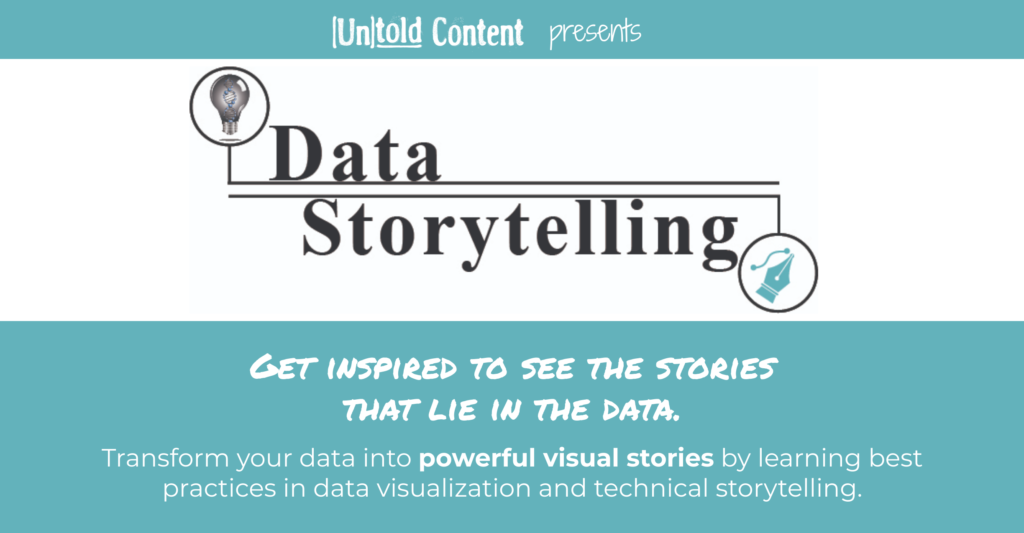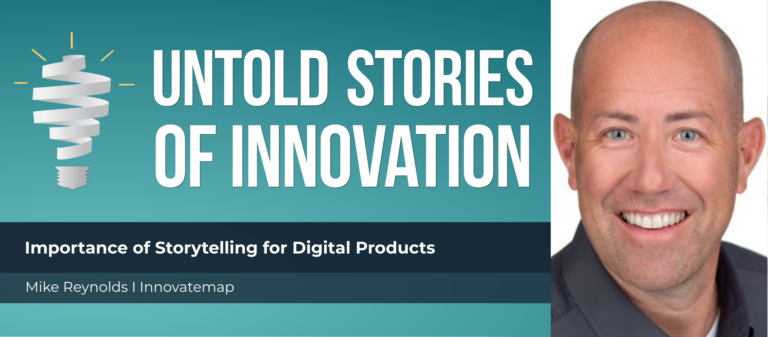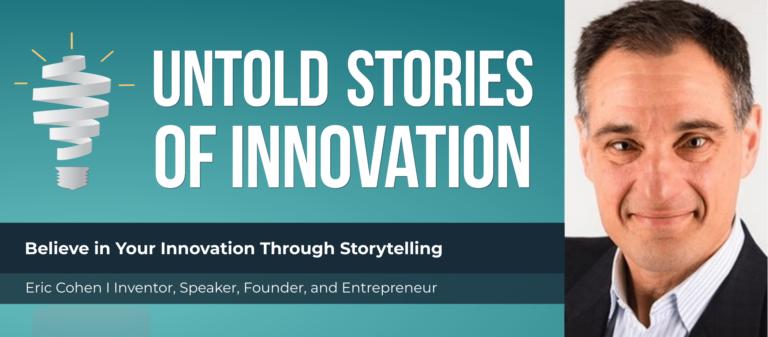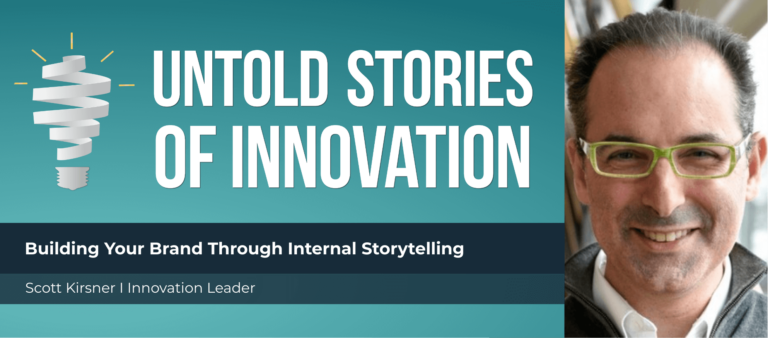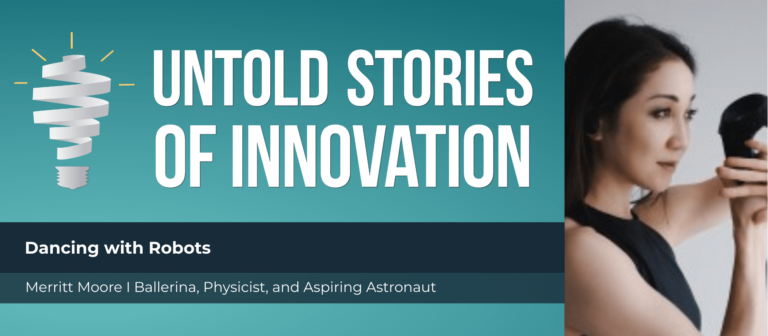Motivating the Innovator with Jim Rekoske of Ecolab
Motivating the Innovator - Untold Stories of Innovation
“Storytelling is one of the most under-appreciated aspects of how we have to drive innovations to success. If it's not commercially successful, the innovation is just an idea. Making ideas commercially successful is really the spirit of innovation, and that innovation doesn't happen if you can't convey quickly and easily to those who will use your innovation, what it's good for, what it works for, what problem it solves, and why it's the right solution.” - Jim Rekoske, senior vice president of research, development and engineering at Ecolab
From today’s episode, Motivating the Innovator you’ll learn:
Why do stories matter to the innovation process? What values can be instilled in innovators who share stories? How do innovation leaders inspire creators to tell and share their success and failure stories?
Jim Rekoske, a senior vice president of research, development and engineering in the global industrial segment at Ecolab, speaks to the importance of keeping the user at the heart of an organization’s mission and culture. Ecolab’s innovators invent new technology that’s accessible and easily navigated to create value for customers, which simultaneously creates value for the company. Jim explains that an innovation must be communicated through story every step of the way to be commercially successful. Storytelling makes the problem visible to internal investors and reveals the solution’s impact on consumers.

Dr. Jim Rekoske is senior vice president, Research, Development and Engineering (RD&E) for Ecolab Inc., the global leader in water, hygiene and energy technologies and services that protect people and vital resources. In this role, Dr. Rekoske directs the strategy and execution of the RD&E function to ensure alignment of the new product portfolio across the Industrial Sector and drive growth in revenue, margin and capabilities within the organization. Prior to Ecolab, Dr. Rekoske served as the vice president of R&D and chief technology officer for Honeywell UOP. He had global responsibility for product development and introduction strategy for the $3 billion division of Honeywell involved in refining, petrochemicals and natural gas processing.
untoldcontent.com/trainings/data-storytelling-training
TRANSCRIPT – Motivating the Innovator
This episode, Motivating the Innovator is powered by data storytelling training from Untold Content and Data+Science. Transform your data into powerful visual stories by learning best practices in data visualization and technical storytelling. Whether you’re a PowerBI or a Tableau person—or just want to better communicate your data—this workshop will inspire you to see the stories that lie in the data. Learn more at https://untoldcontent.com/datastorytellingtraining/.
Katie [00:00:00] Our guest today is Jim Rekoske. He’s a senior vice president of research, development and engineering in the global industrial segment at Ecolab. Jim, I am thrilled to have you on the podcast today.
Jim [00:00:12] Katie, I’m happy to be here as well. Thank you.
Katie [00:00:15] Tell us–I would love to know where your personal story of innovation began. I know that you worked for several years at Honeywell and EOP before moving to Ecolab. Go back as far as you’d like. But I’d love to hear, you know, your interests and your drive towards innovation.
Jim [00:00:33] Well, I was trained as an engineer, and I think like most trained engineers, we started our lives as kids, tinkering, taking things apart, putting things together and making them work maybe better in our own eyes, or at least the way we wanted to in our own eyes. And that’s really where my innovation journey started. I had a family who was very industrious and liked to build things and a father who was a mechanical engineer. And he instilled that in all of his kids to be able to understand how things work, rip them apart, put them back together again. And if you didn’t succeed the first time, keep trying.
Katie [00:01:08] Are you still a tinkerer in your everyday life as well? Obviously, you probably are at work in many ways.
Jim [00:01:14] I am much to my wife’s chagrin, and I have a lot of, let’s say, half-finished projects around the house.
Katie [00:01:21] So, you know, the heart and soul of our podcast is to explore the role that storytelling can play in the art of innovation. What are your thoughts on storytelling and how it moves innovation forward?
Jim [00:01:35] Yeah.Storytelling is one of the most underappreciated aspects of how we have to drive innovations to success. If it’s not commercially successful, the innovation is just an idea. Making ideas commercially successful is really the spirit of innovation, and that innovation doesn’t happen if you can’t convey quickly and easily to those who will use your innovation, what it’s good for, what it works for, what problem it solves, and why it’s the right solution.
Katie [00:02:13] Yes. So adoptability. It seems like we have such little time really once a product goes to market for its success or its failure. That’s such a small window that we get. And if that orientation, if the clarity of its impact is not super clear to the end user, that time runs up.
Jim [00:02:36] Yeah, and I think [00:02:37]one of the most important things about that communication on innovation is accessibility and making sure that people understand how they will use it and why it’s valuable. How many times do we start up our computers and see that little symbol spinning and waiting for our email to load or something else? It feels sometimes like we work for innovation or we work for the technology instead of the technology working for us. And so we have to factor all of that into the user experience and make sure that as a whole what we come out with is very engaging, very impactful, but also very accessible technology.
Katie [00:03:17] Absolutely. So at Ecolab, could you tell us about–I am sure you just have incredible innovation stories coming out of Ecolab. Will you start by giving us a sense of what you do? I know you work across sectors. It’s an extremely large organization and you are highly collaborative with your partners as well.
Jim [00:03:36] We are not only with internally, but also externally with our customers. So the industrial group at Ecolab comprises kind of what it sounds like. It comprises our water businesses, our paper, our mining, our downstream businesses, downstream energy, as well as food and beverage and textile care, which is the process of cleaning towels and linens and things like that for large institutions. So we do have a lot of very different applications, but there’s a lot of very common problems, trends, thoughts, ideas that come out from those. And so [00:04:15]it’s incredibly important to make sure that the organization can communicate those things internally very effectively. Once we have that innovation, we’ve got to be able to communicate that externally very effectively as well.
Katie [00:04:29] Well, let’s go a little deeper into internally how you inspire collaboration and interdisciplinary thinking across business units. What are some of the strategies that you find that works to make story sharing and idea sharing something that people feel comfortable taking risks to do?
Jim [00:04:48] Yes. So, Katie, this is a journey that we’re on right now. And we’ve never–I don’t think any organization has perfected it and we wouldn’t claim we have. But one of the things we did very recently is we completed what we called the ”Imagine Challenge.” And in this imagine challenge, we put together five sort of grand challenges that exist in our businesses in the industrial group today. And we asked the team, the group, the R&D organization and the marketing organization to come together to build pitches around how they would solve these grand challenges. We then had those pitches reviewed by venture capital firms. So we actually had a panel of V.C. investors come into our facility, had a daylong pitch event where we had our teams pitch those opportunities and got feedback on the pitches and on the prospects of the folks who were doing it. What they did well, what they didn’t do well.
Katie [00:05:46] That’s incredible. How did the teams form? Did you find that people sort of clung to the coworkers who they always work with? Was there? What did you do to sort of break apart any silos in that moment?
Jim [00:06:01] So when we sat down to develop the teams, we were actually quite purposeful about identifying who would fit where on the various different teams. And so there was a bit of self-assembly around getting people to gravitate towards the ideas that they liked. But because we had over 100 people in our R&D and marketing organizations participate. What we ended up doing is we formed teams of five to six people, oftentimes multiple teams working on the same grand challenge. And then we shifted people around based on our view of where we could get the best composition for the teams. So it was a bit of self-assembly and a bit of management intervention to make sure we had the right skills and all the different teams.
Katie [00:06:48] And what storytelling techniques did the VCs , the venture capitalists, find particularly effective? Did you notice that the room was captivated by certain strategies that the teams were using to pitch their concepts?
Jim [00:07:03] Yeah, [00:07:03]I think probably the most exciting pitch that came out of that was one which was told in the form of a future story and how a product and an offering that we could develop and Ecolab would solve a problem that was obvious to people in that in that future story. So the area was in renewable energy and the concept was that there were opportunities in solar panel cleaning and solar panel availability that are very similar to surface cleanings that we do today in Ecolab. And so as a result, there was a tremendous amount of energy around that by the team because they felt connected to it and it really translated into their pitch and how they created that pitch for the investor community.
Katie [00:07:57] In that pitch. Am I understanding correctly that the project team, they had to harken toward a future problem that maybe wasn’t realized yet? Was there a sense of, in the pitch, having to really bring the audience along to understand what this problem would look like in the future?
Jim [00:08:18] There was and a lot of it focused on, you know, understanding we all drive by these solar panels and we see them. And some of them are in accessible locations. And some of them are pretty inaccessible. If they’re on the roof of your house, for example. They’re not the easiest to access, but the efficiency of being able to capture sunlight goes down dramatically with dust accumulation and with other grime, which happens to accumulate. And part of what we do at Ecolab is building good cleaners and detergents, which can handle that as well as keep it clean longer. And so just building again on that experience, but also telling a story that, yeah, I’m not sure I want to hop up on my roof in the middle of wintertime in Chicago in order to clean off my solar panels.
Katie [00:09:04] You know, [00:09:04]something I love about that storytelling strategy is the way it leans into the importance of relatability. It may seem overly simplistic, but just that one moment where you’ve painted a visual picture of someone climbing on top of their roof, that five seconds worth of visual storytelling can have a huge impact on helping an audience process what that future looks like, what the problem feels like.
Jim [00:09:30] Absolutely. And I couldn’t agree with you more. In fact, [00:09:33]one of the things that we do a tremendous amount of is trying to build those authentic partnerships with our customers in order to bring them in and show them how our products and our offerings can help make their lives and make their opportunities better. So we have a facility we’ve carved out here at our Naperville, Illinois campus, which has, what we call it, Water University, where we bring people in. Not only our own folks, but people from our customers and teach them all about water, water chemistry, and the things that matter to them. And we make it hands on so that they can see the initial impacts. We then couple that with a customer experience center and a tour of our R&D facilities, which allows people to really see hands on how our equipment can impact their lives and how we make it relatable for them so that they see immediately how easy the solution is to use. It’s great for us as well, because if we have a solution that’s not quite easy enough for them to use. We find that out pretty early on and we can make adaptations as a result.
Katie [00:10:36] Yes. So user-centered design is not just imagining the persona of the user but inviting them into your innovation conversation.
Jim [00:10:45] That’s right. We’ve done that also recently with a water safety platform, which I wanted to talk a little bit about.
Katie [00:10:52] Please.
Jim [00:10:52] So one of the big challenges that exists in institutions, and hotels being a great example or office buildings, cooling towers are a great breeding ground for bacteria and other problems. And one of the challenges that comes about, which is highly publicized, is Legionnaires disease, which comes from the Legionella bacteria that can grow in cooling towers. Previously, it had been necessary to take water samples, send them to qualified lab, wait two to three weeks in order to get your results to determine whether or not you had a Legionella risk. We’ve developed two new technologies, one called rapid bio intelligence and one called water safety intelligence, which coupled together to be able to give not only that result now instead of weeks in minutes for a customer on their site and as well give them an opportunity to be able to look across their networks and understand which facilities might be at most risk based on the chemistry that they’re using to control Legionella and other bacterial growth. The environmental factors that they have and so forth. So by making these technologies easy to use and accessible, we’ve been able to really drive a really interesting change, a step change really in the ability to control Legionella.
Katie [00:12:14] That’s unbelievable. I want to sort of rewind and go back to that moment where your innovation teams first started innovating against that problem. How did you know about the problem? Did story play a role in the creation of the technical brief or the problem statement that ultimately led to that work?
Jim [00:12:37] [00:12:37]It did actually in two kinds of interesting ways. So first there was the internal storytelling. One of those laboratories that people send samples to for analysis are us, Ecolab. And so we actually have a very nice business doing that water to sample testing. And so you can imagine there was some hesitancy when people said we were gonna disrupt our own flow of business.
Katie [00:13:03] Infrastructure, yes.
Jim [00:13:04] So the question was, how do we tell the story around the value that we can create by taking something that takes two to three weeks and turning it into something which takes 10 minutes?
Katie [00:13:14] From an internal perspective too, right. Buy in internally for that is a challenge.
Jim [00:13:19] Exactly. Because the people who were entrenched in the old way of doing things only saw risk, right? By doing it this new way. And so having that story around, imagine being able to dip a piece of paper into a water stream. Wait 10 minutes, take a picture of it with your cell phone and get a result that says I’m safe from Legionella or I have a worry about Legionella.
Katie [00:13:47] Yes.
Jim [00:13:48] Telling that story and creating that imagery for people and allowing them to kind of grasp it. And then say and oh, by the way, think of how much they’ll pay for being able to do this faster, because here’s all the time that they save and here’s all the risk that they save as well.
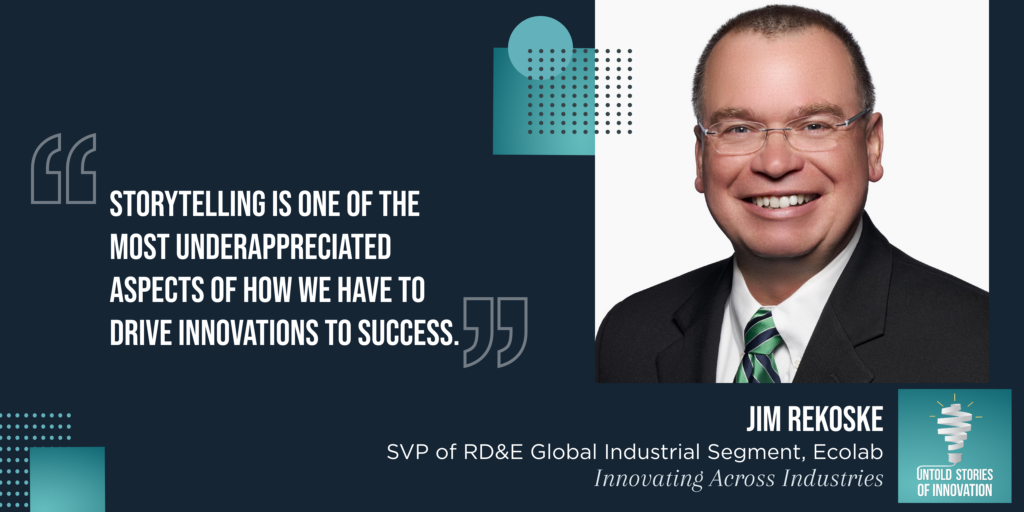
Katie [00:14:06] Yes. You know, I think we have these images in American culture in particular, kind of coming out of Silicon Valley of the garage guru inventor who sort of comes up with some idea on their own. And it’s all about their success. And, you know, America has already such an individualistic kind of culture. At least it leans that way. You know, I think to hear that particular story, you hear that the really powerful innovator needs to always have the user at the heart of what they’re doing. I noticed when you first sort of made that pitch of imagine what would be possible if that two week process could be condensed into a couple of minutes, that that’s the value that’s delivered to the end user. But someone who is leading the manufacturing segment of the operational segment, who has built that infrastructure, that’s their baby. That’s the process. And to know that that might get dismantled in service of their customer. I imagine that’s not always a really easy position to be in, and to me that speaks to the strength of Ecolab’s organizational mission and the culture there to be able to, to some degree, always keep the end user and the consumer at the heart of what you’re doing.
Jim [00:15:24] Yeah, I think you’re right. Katie, I think, you know, as individuals, we all get entrenched or we all become comfortable with how we do things. I have my own routines. I’m sure you have your own routines as well. And things which impact those routines or change them are oftentimes frowned upon. But the beauty of having a nice, strong, innovative culture surrounding you in a company like Ecolab is the ability to be able to challenge those norms and to be able to have someone who is going to say, hang on, I know this is the way we’ve always done it, but can you imagine a future where… Right. And then fill in the blank here. That creates a conversation amongst peers and a conversation amongst the management team, which allows us to be able to have the freedom to tinker, if you will.
Katie [00:16:23] Yes. You know, I want to lean in with you, especially since you’re a recovering engineer. I’m just kidding. We work with a lot of engineers, systems engineers and chemical engineers at Untold. And we’re always sort of sitting alongside the engineer, helping them convey their story, convey their data in a way that’s not too in the weeds, but that’s still evidence based. And one of the challenges that we often see at Untold in that process is that the scientist, the researcher, their data is everything to them. And ironically, that’s also a challenge within innovation storytelling and getting buy in. I noticed, for instance, when you shared your first innovation story about that product, you didn’t cite specific data or, you know, you cited evidence about time. But really that one bit of information about time was really all we needed to know to want to lean in and find out more. Can you? I would love your perspective on how you sort of balance how much evidence to share when you’re communicating a concept or pitching a prototype.
Jim [00:17:36] Katie, I think you’re spot on. And that’s one of the challenges that I have in innovation management with the individual contributors, the scientists, the engineers, the investors, as they come up with their new inventions and innovations is they get attached not just to the outcome that it creates, which is what we’re really after, but they get attached to almost the development. It’s like, you know, having a child not worrying or worrying about are they going to graduate from high school, but actually worrying about, you know, what clothes they’re going to wear to high school every day, what shoes they’re going to wear. They get so into the details. Yeah, it doesn’t drive the value equation from the customer.
Katie [00:18:23] I love that metaphor. That’s hilarious.
Jim [00:18:26] So for me, we always are trying to bring our scientists and engineers to remember to start with creating value for your customer. If you can create value for your customer, then there is a way for Ecolab to be able to get value out of what you’re doing. If we don’t create value for a customer, it becomes a lot harder to do that. Sometimes you can develop things where it’s not easy to see how the company or the individual who developed it can create value. But it’s rare that you find a case where you just can’t extract some of that value for yourself when you’re creating value for your customer.
Katie [00:19:13] You know, I think everything you said is so important. And that’s especially true as you not just gain internal buy in, but you start to look towards the final external ways that we communicate our innovative ideas. You know, there’s some research about the fact that generally consumers look to scientists and respect scientists and trust their expertise. And then there’s also the challenge of the public really not understanding science, scientific concepts. And they’re being sort of a lack of scientific literacy. And in the world now. So, you know, what role do you think innovators can play and communicating their work to non-experts?
Jim [00:20:01] Yeah. So pretty early on in my career, I had an interesting experience with this. I was at one of these corporate poster events that happens frequently, right. Where large companies put posters together and senior executives at their annual meeting or whatever will walk through. And the CEO of this particular company was walking through and he was having polite conversation with people at the different panels and posters. And one gentleman from a poster very near mine went up, grabbed the CEO by the arm and said, “If you give me a million bucks, I will turn it into 20 million dollars in two years.” And immediately I kind of turned my head to say, wow, that was a very bold statement. But I tell you what. He got his attention. And so knowing who your audience is, whether it’s internal or external and knowing what drives their decision making and what is going to get their attention and opening with that is, you know, a skill that I think I learned pretty early on. And I think is a skill that I think all of our innovators need to learn, because that elevator pitch or opening statement or whatever you want to call it, weighs so heavily on a person’s psyche and how well they listen for the next five minutes is almost 100 percent predicated on that.
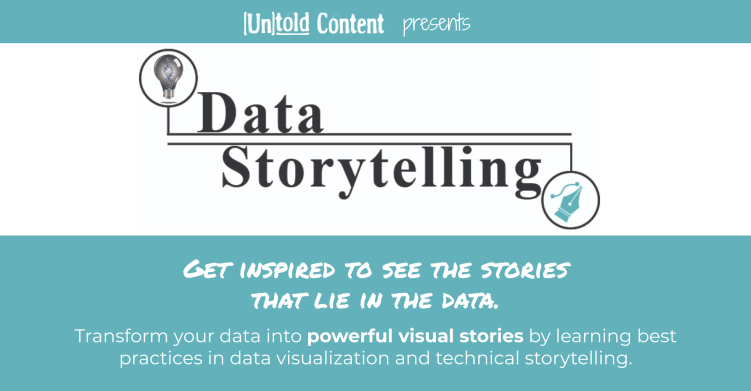
Katie [00:21:29] How much time do you tend to get inside Ecolab? You being someone on an innovation team, someone with a good idea, how much time do they get typically to make that pitch?
Jim [00:21:41] In my experience, people often say three minutes. I think it’s a lot shorter than that. I think it’s the first 30 to 45 seconds. You have 30 to 45 seconds to draw a picture and a viable solution in that 30 to 45 seconds. Right. Here’s why I care. And here’s what the viable solution is. Then people start thinking and then you can get them on to, ok, now, given this is a viable solution, this is how we make money. This is how the customer makes money. You get more time to add those other pieces on. But if you can’t paint that picture in the first 30 to 45 seconds, I think people start to tune out pretty quickly.
Katie [00:22:22] Can you share more innovation stories coming out of your teams? I loved the example you shared earlier. Do you have any examples of really effective 30, 45 second pitches or at least that first intro into it?
Jim [00:22:37] I think the one that I would come back to, mentioned it briefly, is the water safety intelligence platform. That was pitched originally in the following way. Imagine being able to have a dashboard which showed you the risk of Legionella at every facility that you owned and operated. And how we do that is through data informatics, bringing data in that allows us to be able to give you a risk calculator. That was a powerful statement that really resonated internally and actually resonated with some of our largest customers, very large institutional chains who said, yes, this is a critical risk for me if I’m down for a week because I have to clean out from a Legionella risk, it cost me millions and millions of dollars. So now I have their attention because they recognize there’s a potential benefit for them, which is significant enough to warrant the next couple of minutes of listening.
Katie [00:23:37] You know, I think you did that in about seven seconds too. So, kudos to that. What other innovation stories are you excited about that are coming out of Ecolab right now?
Jim [00:23:46] So right now, we’ve got a lot of really interesting stuff, but our digital platforms are probably the most exciting to me. We’re now at the intersection and have been for a long time. Ecolab has been a leader in digital development for a long time. But we’re now at the intersection of bringing that artificial intelligence and machine learning to reality with all of the data that we have. And instead of providing assurance to the customer, we’re providing them not only that assurance, but also insights into how to operate better, not just assurance that their operation is going to be safe, their food is going to be safe, the environments are going to be healthy. But to make sure that they’re making them better. Hey, did you know that? You know, the maid on floor six is suspending four minutes less per hotel room than the maid on floor four. That gives you an insight which allows you to be able to go and find out what’s different. How is this person doing this versus someone else, and those sorts of insights are valuable and they’re not necessarily the core of what Ecolab is known for today. But those insights really drive future stickiness and future customer loyalty to us and our ability to be able to make better products and better offerings as well.
Katie [00:25:13] Absolutely. You know, I have a question for you about the speed of innovation and the motivation of the innovator. What’s sort of the impact that that storytelling and having confidence in their communication? How does that impact the innovator and the work they’re able to do?
Jim [00:25:35] Yeah. So, Katie, I think there’s probably two key attributes I look for in good innovators. Obviously, they need to be smart but putting that aside, they need to have self-awareness, right? They need to be able to understand how they’re viewed and how their company is viewed and how their innovation is going to be viewed. And then they need to have the confidence to be resilient around that. So just because I walk into a situation where I might not be the cat’s meow or the centerpiece. That doesn’t mean I can’t have the confidence to win that slate of attendees over to listening to me, having the confidence to do that is critical. Having the self-awareness of the situation you’re walking into is also critical.
Katie [00:26:27] Self-awareness. What does that look like? Does it sort of look like empathy, understanding the room being aligned to the stakeholders that are present?
Jim [00:26:39] Yeah, absolutely. Empathy is a big piece of the outcome of self-awareness. If you don’t have the self-awareness to know what the challenges are, what the room is facing, it’s very hard to be authentically empathetic. You can try and fake it, but people generally see through that pretty quickly. So finding that way that’s going to allow you to be empathetic, to engage and then provide a very impactful, again, elevator pitch with some additional evidence attached to it to make you credible. That’s really what the innovation pitch is all about.
Katie [00:27:21] Definitely. Do you think the innovation community is getting enough training and practice, that there’s enough visibility for this level of communication and really art form that it takes to be able to amplify your idea?
Jim [00:27:37] Well, I would say it’s not something that’s taught in school. Put it that way. So as a result. You can imagine that we as companies involved in innovation in Ecolab in particular, when we bring people in, we’re looking for those sparks already that exist. Is this person aware of how they’re viewed themselves? Does this person have the self-confidence to be able to really stand and react in the right way under the stressful conditions? If they have those features, then we bring them in and we help them understand. OK. It’s not just enough to have a great idea. It’s not even just enough to have a great idea and turn it into a reality. You’ve got to sell that idea. And that’s selling the idea happens internally for 90 percent of people involved in innovation. But the selling skills are also relevant for the 10 percent that have to sell it externally as well.
Katie [00:28:40] Yes. That is such an excellent point. I think not underestimating those soft skills of communicating well, writing well and generally being able to have confidence and persistence. It’s amazing how much sort of mental perspective goes into whether or not you can, you know, sustain a lifetime of being innovative.
Jim [00:29:07] Yeah. And I think, you know, engineers sometimes get a bad rap about our ability to be able to do that, right? I mean, we get very as you said, engineers and scientists get very tied into facts and data and observations. And those things become natural to them because that’s what they’re trained in school to do. And turning those facts and data and observations into something which is relatable is something which is not taught in something which has to be learned essentially on the job.
Katie [00:29:41] Thank you so much for sharing those observations. I’m so grateful for this conversation. I want to ask one last question. I think you’ve already shared so much wisdom in this conversation, but I love to know any additional advice that you would give to innovators as they prepare to convey their great ideas.
Jim [00:30:00] I think probably the best advice I got on that is what I’ll pass on, which is remember, the easiest way to convey the idea is to pretend you’re speaking to your great aunt about the idea. Right. Somebody who doesn’t have a technical background. Somebody who might be interested and you respect them and they respect you but doesn’t have the technical background to really keep up with you. Very rarely do you have the technical selling discussion which really drives the final decision. Oftentimes it’s like speaking to your great aunt about the technology and explaining what you do and how you do and why it matters.
Katie [00:30:43] That’s incredible advice. Thank you so much, Jim. This has been the best conversation. I really appreciate your time.
Jim [00:30:50] Thank you, Katie. It’s been fun for me as well. Thank you.
You can listen to more episodes of Untold Stories of Innovation Podcast.
*Interviews are not endorsements of individuals or businesses.
